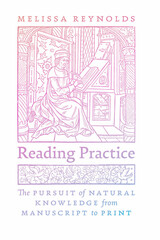Architecture of Memory: Exploring (Post-) Jewish Spaces in Eastern Europe
University College London, 2025
Cloth: 978-1-80008-895-5 | Paper: 978-1-80008-896-2
See other books on: Contemporary (1945-) | Eastern Europe | Jewish Studies | Memory | Public Art
See other titles from University College London
Cloth: 978-1-80008-895-5 | Paper: 978-1-80008-896-2
ABOUT THIS BOOK | AUTHOR BIOGRAPHY | TOC
ABOUT THIS BOOK
An experimental study of the architecture of former shtetls, reflecting on cultural memories and Jewish heritage.
Using archival, architectural, and artistic methods, Architecture of Memory investigates the spectral architecture of former shtetls, predominantly Jewish towns in Central and Eastern Europe before World War II. Through architectural designs, art, and theoretical discussions mapping the historical legacy and present condition of shtetls, author Natalia Romik explores themes of architectural disappearance, urban remembrance, and functional change amid social upheaval. Romik’s unique design research of synagogue ruins, burial grounds, former ritual baths, and other “difficult heritage” contributes to discussions about the protection of Jewish heritage in places where there is no longer any Jewish population.
Using archival, architectural, and artistic methods, Architecture of Memory investigates the spectral architecture of former shtetls, predominantly Jewish towns in Central and Eastern Europe before World War II. Through architectural designs, art, and theoretical discussions mapping the historical legacy and present condition of shtetls, author Natalia Romik explores themes of architectural disappearance, urban remembrance, and functional change amid social upheaval. Romik’s unique design research of synagogue ruins, burial grounds, former ritual baths, and other “difficult heritage” contributes to discussions about the protection of Jewish heritage in places where there is no longer any Jewish population.
See other books on: Contemporary (1945-) | Eastern Europe | Jewish Studies | Memory | Public Art
See other titles from University College London












